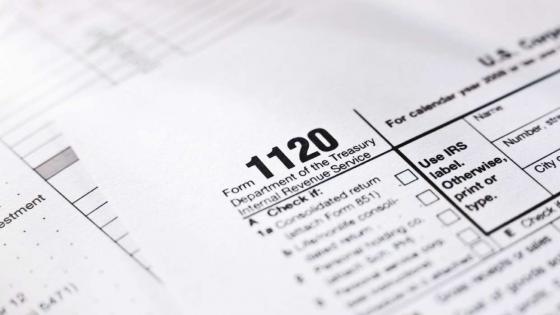Existing literature is a tango for two: either corporate taxes or credit affect economic inequality. Economists tend to agree that corporate taxation is progressive and the tax competition-induced cuts in the last 30 years significantly contributed to a rising income and wealth inequality (Faccio and Iacono 2021). The key mechanism is that the asset-rich shift income from labour to capital, while the associated increase in investments mainly benefits large firms (on the margin).
A distinct, and relatively more recent, literature argues that corporate taxes and other fiscal policies affect bank credit and firms’ capital structure (Heider and Ljungqvist 2015, Ağca and Igan 2019). The main mechanism is that banks and firms subject to the tax cut have higher after-tax profitability, so that the probability of default decreases, making room for more leverage. Other studies, however, suggest an opposite mechanism, whereby in equilibrium credit demand falls because firms will use more own funds. Finally, there is a large literature literature on access to credit and inequality (e.g. Berg 2018, Delis et al. 2023a). This literature highlights that a credit expansion leads to higher income and wealth inequality via higher future income for those being granted credit vis-à-vis the credit constrained.
How corporate tax rates affect inequality via the credit channel
In a recent paper (Delis et al. 2023b), we posit that a fundamental distributional question remains: Which firms/business owners benefit, and in what proportions, from the potential credit expansion after a decrease in the corporate tax rate? If banks relax their lending standards and predominantly expand credit to previously credit-constrained firms, or if they offer significantly lower lending rates to low-income business owners, then inequality will decrease because of the marginal increase in the income and wealth of previously credit-constrained/relatively poor business owners (vis-à-vis relatively rich business owners, who probably already have access to credit). This marginal effect would be consistent with the extant literature on the negative effect of credit expansion on aggregate measures of inequality (e.g. Beck et al. 2010).
This line of theoretical consideration might not be complete if changes in the credit supply occur predominantly via lower credit costs or higher loan amounts for relatively rich or existing borrowers. For example, banks might use most of the fiscal policy-induced increase in credit supply to finance relatively wealthy borrowers; or expand credit to poor business owners, but with an increasingly higher difference in the loan spreads given to the poor compared to the wealthy. In these cases, the incomes created by the businesses will probably benefit the wealthy business owners on the margin, implying that income and wealth inequality might increase (the bulk of the marginal benefit will not go to the credit constrained/relatively poor).
Empirical analysis and findings
To answer our research question, we use a unique sample of repeated loan applications by small firms with majority owners who apply for credit to a systemic West European bank between 2002 and 2009. Among several traits of loan applicants and firms, we also observe the credit score given by the bank to firms, which encompasses all the hard and soft information attached to the bank’s credit decision. Moreover, the bank’s country issued a large decrease in the corporate tax rate during the mid-2000s, whereas other surrounding countries to which our bank also directs credit did not during that time. This setting nicely creates treated and control groups of firms, for which the credit score also creates a sharp discontinuity in the loan origination decision.
Figure 1 shows the evolution of income and wealth for treated and control groups. The vertical lines denote the beginning (2005 onwards) and end (2008 onwards) of the period during which the corporate tax rate fell. The figures reflect parallel trends between the treated and control groups until 2004. The parallel trends break from 2005 onward and approximately reestablish from 2008 onward. The difference between income and wealth of treated groups post-treatment is more than 12%.
Figure 1 Evolution of income and wealth for treated and control groups
Our formal empirical analysis controls for the credit score and examines several outcome variables to establish the role of the credit channel in the above reflections. We first find that after a decrease in the corporate tax rate, the treated relatively poor individuals are 4.6% more likely to get loans, according to our preferred (but also conservative) specification. Thus, these applicants are less credit constrained after the tax cut.
However, the relatively rich treated business owners obtain significantly larger loans (approximately 7.2% larger) with lower spreads (approximately 7.7% lower). The larger and more competitively priced loans contribute to a significantly larger increase in income and wealth for the rich business owners three or five years after the loan origination. Specifically, we find that the income of the relatively rich treated loan applicants is 7.3% larger three years after the loan application. We also find larger increases in the wealth of the treated rich loan applicants compared to the poor applicants and the untreated applicants. Last, we show that almost half of the differential effect of the tax rate on the rich vs. poor loan applicants’ future income and wealth comes from the higher loan amounts to rich applicants and/or decrease in loan spread.
To clarify why we call our analysis evidence on inequality, we provide the following example by calculating income means of ‘interesting groups’ of loan applicants (Table 1). Group A represents the mean current (before the tax change) and future (after the tax change) income of untreated poor applicants (lower 25th centile of the income distribution) that have been denied credit (rejected loan application). The income change for this group is only 1.3% three years after the loan application. Group B includes treated poor applicants that have been granted credit, which see an increase in their income by a considerable 10.1%. Moving to rich applicants (upper 25th centile of the income distribution) that have been granted credit (as is usually the case), those untreated by the tax cut (group C) see an increase in their income by 12.5% and those that are also treated (group D) an increase by 17.7%. Evidently, for group D there is a 7,6% higher expansion of their average income compared to group B.
Table 1
Policy implications
Our results validate the credit channel of inequality that originates in decreases in the corporate tax rate. Even though the cut in corporate taxes increases the probability of loan origination to the relatively poor business owners, the lending rates (loan amounts) to the relatively wealthy are considerable smaller (larger). Consequently, the future income and wealth of the relatively rich increase faster than the equivalent of the relatively poor, thereby increasing economic inequality.
As similar credit channels have been identified in the relation between monetary policy and inequality (e.g. Peydro et al. 2021), our research adds to the calls for rigorous evaluation of economic policy with the availability of credit to the poor. Given that the banking system’s optimal credit risk might be surpassed by credit expansion to very risky projects, we suggest that fiscal policy should reexamine the possibility of credit provision to credit-constrained business owners with positive NPV investment ideas. Institutions like the European Investment Bank are key in disseminating such policies.
References
Ağca, Ş and D Igan (2019), “Fiscal consolidations and the cost of credit”, Journal of International Economics 120: 84-108.
Beck, T, R Levine and A Levkov (2010), “Big bad banks? The impact of U.S. branch deregulation on income distribution”, Journal of Finance 65: 1637-1667.
Berg, T (2018), “Got rejected? Real effects of not getting a loan”, Review of Financial Studies 31: 4912-4957.
Delis, M D, F Fringuellotti and S Ongena (2023a), “Credit and income inequality”, Mimeo.
Delis, M D, E C Galariotis, M Iosifidi and S Ongena (2023b), “Corporate taxes and economic inequality: A credit channel”, CEPR Discussion Paper 18762.
Faccio, T, and R Iacono (2021), “Corporate income taxation and inequality: Review and discussion of issues raised in the triumph of injustice – How the rich dodge taxes and how to make them pay”, Review of Income and Wealth 68: 819-829.
Heider, F and A Ljungqvist (2015), “As certain as debt and taxes: Estimating the tax sensitivity of leverage from state tax changes”, Journal of Financial Economics 118: 684-712.
Peydro, J-L, N Johannesen, M Jørgensen and A L Andersen (2021), “Softer monetary policy increases inequality”, VoxEU.org, 19 April.









